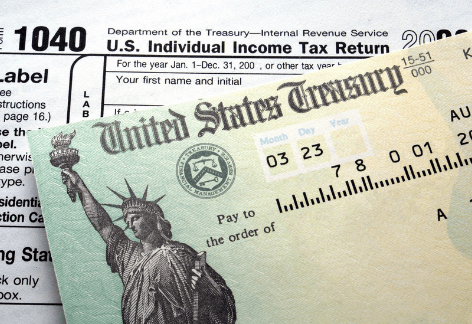The Tax Cuts and Jobs Act (TCJA) was signed into law on Dec. 22, 2017. Its changes to the way federal taxes work went into effect in 2018. How does the TCJA affect you?
While tax reforms are commonplace in Washington, and changes to the tax code occur every year, the Tax Cuts and Jobs Act (TCJA) was one of the more major overhauls to our tax system and continues to affect millions of taxpayers. If you’re still wondering how President Trump’s signature tax reform has affected you and your taxes over two years later, you’re far from alone.
Regardless of whether you’re part of a low-income family or a high earner, the Tax Cuts and Jobs Act is bound to have an effect on how much you’re expected to pay, and it will continue to affect your taxes until 2025, when most of its provisions for individuals are expected to expire.
Thankfully, many of its changes to deductions, exemptions, estate taxes, and tax credit can be summarized, so let’s go over a few changes together and determine whether you’re likely paying more or less than in 2017, and why.
Going Over the Basics
The TCJA tackles the federal tax code and aims to, as the title of the law implies, impose judicious tax cuts. To do so, it has overhauled and made changes to certain exemptions, itemized deductions, and the child tax credit. Some important highlights include:
-
-
- Changes in income tax rates across all seven tax brackets.
- Massive changes to individual standard deductions.
- Changes to itemized deductions that may convince many taxpayers to switch to standard deductions.
- Estate tax exemption limit changes.
- And much more.
-
Some of the changes the TCJA has introduced do not mesh well with old tax practices, so it is important to make sure you understand how each major change has affected your tax bill in the past two years.
Changes in the Standard Deduction
Perhaps the most significant change in the Tax Cuts and Jobs Act is the change to the standard deduction – it’s been effectively doubled for all types of filing taxpayers.
For single taxpayers, the standard deduction went from $6,350 in 2017, to $12,000 in 2018, and $12,200 in 2019.
Married taxpayers filing joint returns can file for a standard deduction of $24,400 since 2019, up from just $12,700 in 2017.
Head-of-household filers saw their standard deduction rise from $9,350 in 2017, to $18,000 in 2018, and $18,350 in 2019.
This is great news for taxpayers who choose to calculate their tax returns using standard deductions – but it comes at the cost of giving those who choose itemized deductions far fewer advantages.
Changes in Itemized Deductions
Not only have standard deductions been practically doubled for all filers, but the Tax Cuts and Jobs Act has made significant changes to multiple itemized deductions, meaning many taxpayers should take pause and reconsider the way they do their taxes.
The most significant changes to itemized deductions in the bill affect homeowners and property owners, particularly those paying off a mortgage or seeking refinancing loans. The TCJA limits the deduction of home mortgage interest to the first $750,000 of the taxpayer’s mortgage debt, rather than the first $1 million as in 2017.
Other important changes to itemized deductions include an increased limit on deductions for charitable contributions (from 50 percent to 60 percent, encouraging those who do benefit from itemized deductions to make use of charity to reduce their tax bill), and changes to itemized deductions on medical expenses (anything past the first 7.5 percent of your adjusted gross income could be deductible, versus anything past 10 percent as pre-TCJA).
Furthermore, several “miscellaneous” deductions have been axed. Examples of removed itemized deductions under the Tax Cuts and Jobs Act include:
-
-
- Deduction for theft and personal casualty
- Deduction for tax preparation fees
- Deduction for unreimbursed job expenses (tools, union dues, work-related education, etc.)
- Deduction for investment expenses
- Deduction for hobby expenses
-
State and local tax deductions have also been changed and are now hard limited to $10,000. This means that property owners in states with very high property and income taxes who are used to deductions above $10,000 on their state and local taxes can possibly chalk up their bigger local tax bill to this particular change.
If you have previously always itemized your deductions, and you want to compare an optimized post-TCJA itemized deduction tax strategy versus simply picking the improved standard deduction, consider going in-depth on your taxes with a professional tax attorney.
Changes in Tax Brackets
While the number of tax brackets hasn’t changed with the TCJA – it’s still seven – they have been moved around somewhat, and the tax rates for each bracket have been reduced.
In 2017, the tax brackets based on taxable income for single filers* their respective tax rates were:
-
-
- $0 to $9,325 – 10 percent.
- $9,326 to $37,950 – 15 percent.
- $37,951 to $91,900 – 25 percent.
- $91,901 to $191,650 – 28 percent.
- $191,651 to $416,700 – 33 percent.
- $416,701 to $418,400 – 35 percent.
- $418,401 and above – 39.6 percent.
-
The tax brackets for single filers in 2020 are:
-
-
- $0 to $9,875 – 10 percent.
- $9,876 to $40,125 – 12 percent.
- $40,126 to $85,525 – 22 percent.
- $85,526 to $163,300 – 24 percent.
- $163,301 to $207,350 – 32 percent.
- $207,351 to $518,400 – 35 percent.
- $518,401 and above – 37 percent.
-
(*) Note: tax brackets are different for single filers, married filers filing jointly, married filers filing separately, and head-of-household filers.
Rather than calculating your taxes solely on your tax bracket, taxable income is taxed according to an effective tax rate based on what you earn.
If you’ve earned an annual taxable income of $70,000 in 2020 as a single filer, then you would pay 10 percent on your first $9,875 ($987.50), 12 percent on your earnings from $9,876 to $40,125 ($3,630.00), and 22 percent on your earnings from $40,126 to $70,000 ($6,572.50), with a total income tax bill (before deductions) of $11,190, which is an effective tax rate of about 16 percent, versus the tax rate of your tax bracket (22 percent).
In 2017, you would have had a tax bill of $13,238.75.
Changes in Alimony Taxes
Another major change in the TCJA is how alimony payments are taxed. Previously, if you were receiving alimony payments from your ex, you would be taxed on that portion of their income while they could claim a deduction on it.
But the Tax Cuts and Jobs Act makes it so that the obligator must still pay taxes on the portion of their income that goes towards their ex, meaning you can now receive tax-free alimony payments while they shoulder the tax burden.
Are You Paying More for Taxes?
Depending on your income, the way you handled deductions, local and state taxes, and other factors (such as property tax costs), you may be paying substantially less or substantially more in taxes since 2018. Working with a tax professional might help you further reduce your tax burden, and better optimize your finances. However, don’t get too comfortable.
While many of the changes the Tax Cut and Jobs Act approved for businesses are meant to be long-lasting, the individual federal tax portion of the bill is designed to sunset around 2025, if not earlier. Keep an eye out for new changes and reforms as they come in, especially following the coronavirus crisis, as it’s likely that the government is eager to balance the task of restarting the economy with refilling its coffers.

